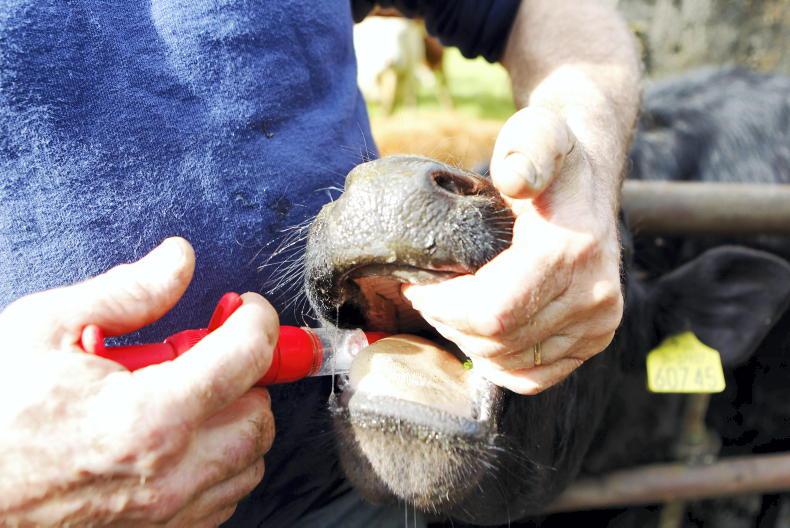Cattle at grass will face a growing challenge from worms, as higher temperatures will see parasite levels rapidly multiplying.
Having a good worming programme in place will limit the impact parasites will have on animal performance.
Delaying treatment, a poor dosing technique and using a product incorrectly will result in animals failing to gain weight and is a waste of money.
It will also increase the level of anthelmintic resistance on farm.
To get the most effective cover from worming products, outlined are five tips to treating cattle for internal parasites.
1. Timing a worm dose right
Getting the timing right is important. Treat cattle too early and you won’t get the same cover period through June and July.
Treat too late and animal performance will be severely affected and there can be a lasting impact on cattle health.
Once you notice around 25% to 50% of the group showing loose dung or scouring symptoms, or coughing after herding to fresh grass, this is the time to go in with the first dose.
At this point, the majority of the group will have a sizeable worm burden and treatment will be most effective.
2. What cattle to treat?
Spring- and autumn-born calves in their first grazing season will be at most risk to worms and should be automatically included in any worming programme.
Store cattle in their second grazing season will also need treating for stomach and gut worms. However, these animals should be less susceptible to lung worms.
The other animals to consider worming are first-calving heifers, especially if these animals calved at 24 months of age.
As these heifers are still developing and under stress during early lactation, they can be prone to health problems caused by worms.
3. Which type of product to choose?
It is always good practice to change the choice of wormer every so often, as this cuts down resistance building up in the herd.
Pour-on wormers are a quick way to treat larger groups of animals.
However, cattle need to be held in a handling race to allow accurate application along the animal’s back.
Oral drenches are also effective, but good operator technique is crucial to make sure the drench is properly swallowed.
Long-reach hook applicators are recommended, as there is no need to catch every animal in a headlock gate, speeding up the task.
Using an injection-based wormer is slower, but is a more accurate method of worming and easier to allow for varying sizes of cattle.
4. Grouping cattle for treatment
When dosing cattle with a pour-on or oral drench, try to group animals in the handling race so they are evenly sized, of similar weight and age.
As this cuts down the variation in animals, there is less need to adjust the dosing rate on the applicator between each treatment.
5. Dosing to the heaviest animal
Ideally, cattle should be weighed before worming.
Not only will this allow herd owners to give an accurate allocation of the worming product, it is a good way to monitor weight gain over the summer.
But if weighing is not an option, group the animals as outlined in step four.
Then set the applicator or drenching gun to treat the heaviest animal in each group.
This will cut down on under-dosing animals and, therefore, give a more effective kill of internal parasites.
